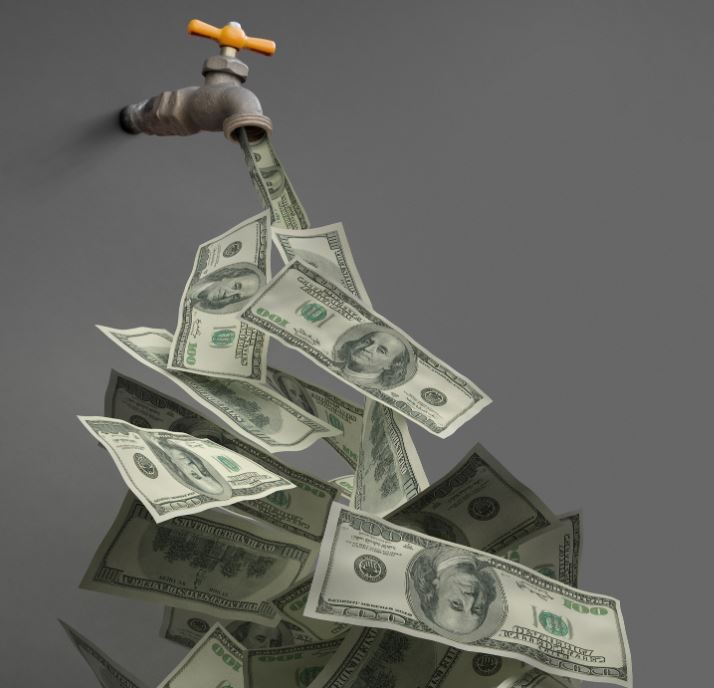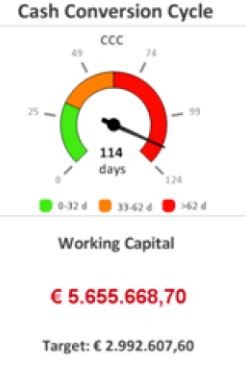Practical Tips for Getting More Cash and Reducing Stress in Your Startup
Get More Cash and Sleep Better at Night
In part 1 of our discussion, we discussed the importance of cash flow management and proper techniques to get the cash flow accurate (the art and science of cashflow). In this article, we discuss the criticality of improving your cashflow conversion cycle and ways to get the money in faster while slowing the money leaving your company. Now it’s a little more tricky for software startups since we are not maximizing inventory turns yet there are some good methods to improve the cash flow. The framework is the Cash Conversion Cycle and you want to have this metric as low as possible.
Mo’ Money In

For startups, getting money in from new customers involves incentivizing the customers to pay early and it’s even better to have them pay upfront. In my prior company, we would try to do large three-year enterprise deals ranging up to $1M or more with a sweetener to have the customer pay upfront. With interest rates (10 year treasury) where they are, customers may push back on parting with their cash yet a simple discount paid upfront can be calculated via discounting the future value (DCF). Sometimes, we would do multi-year deals paid annually (the customer is invoiced every year) but if possible push the strategic nature of your solution to have the customer pay upfront.
Pricing Matters
The other option is to offer flexible pricing models: Software startups can consider SaaS payments that are simple to get customers started. Thales has a good summary on pricing (Thales Group Pricing Model) I’ve used pay-per-use models, and freemium pricing to get the cash in and improve overall cash flow. Sometimes paid POVs work but often potential customers will push back (It also depends on what competitors are doing). An alternative is to have a paid “trial” and add some enticing discounts to get the customer moving.
Keep Happy Customers Happy

For existing customers, I’ve always had an active plan, working with the customer success team to ensure that any large upcoming renewal has the full attention of the management team. “The best way to grow is with existing customers”, our CEO used to say. Asides from providing exceptional customer service, regular dialogue with key users of your product can help reduce churn, and increase customer lifetime value. As an incentive, I would dangle a “renew early” discount (or include an advanced feature set for free). A multi-year renewal helps even more since you are also locking out a competitor.
Do it Manually For Important Customers
If you give the customer an option, they will pay in 60 days if not 90 so I try to take that option off the table so it doesn’t become a negotiation item. When it comes to tools, you can implement efficient payment and collection processes: Software startups can optimize payment terms and invoicing processes to ensure that customers pay promptly. This can be achieved through the automation of payment and invoicing systems.
I’ve found, however, that sometimes with large customers, it’s just better to have a personalized dialogue with the payables team (and cc: ing your sponsor). It’s another opportune time to thank them for using your software as well.
Down DSOs Down
Accounts receivable collections and days sales outstanding (DSO) are key metrics that measure a company’s ability to collect payments from customers. Here is a template that you can use for DSOs and Payable Outstanding (Days Sales Outstanding/Days Payable Outstanding). And the following are some effective methods to improve accounts receivable collections and decrease DSOs:
Implement clear payment terms: Defined payment terms, including due dates and consequences for late payments, can help customers understand their obligations and improve collections. Push back against those 60 or 90-day terms and let the sales force know from the start that your company’s terms are net 30 days. Yes, expectations will be made but set the tone up front on acceptable payment terms.

Don’t Delay When a Deal is Signed
Get a signed PO, check it for errors, acknowledge receipt, and process it right away. Send timely and accurate invoices: Timely and accurate invoicing can help ensure that customers receive their invoices promptly and that there are no errors that could delay payment. Typos, mistakes, a general accounting inbox email vs. an actual person, all these things can add delays to your cash collection.
Sometimes people might just not respond or delay payments. The worse case is that someone doesn’t pay and the account ends in collections or is written off. So be polite, be persistent, and offer incentives for early payments: Offering incentives such as discounts for early payments can encourage customers to pay on time or even ahead of schedule. We did this often at my prior company when we wanted the cash in fast.
An Open Dialogue Prevents Surprises
Communicate with customers: Communication with customers is key to ensuring that they are aware of their payment obligations, any issues with invoices or payments, and resolving any disputes promptly. Remember to have the salesperson get all the appropriate information entered into salesforce.com (https://www.salesforce.com/) so that you don’t have to chase down the right person in accounts payable. Some of the larger companies have massive procurement and payables teams and usually, your inquiry may end up in an automated inbox so it’s best to have human contact if possible.

Monitor and analyze collections: Monitoring collections and analyzing trends can help identify potential issues early and develop strategies to address them. A Dashboard with anything glowing red (90 days or over) should be shared with the executive team.
Capex or Cloud?
Ah…the joy of receiving a bill from AWS or GCP, sometimes it’s just a win deciphering the invoice. Yet capex does create its challenges so leveraging cloud computing to reduce infrastructure costs is probably the better way to go initially. This can help reduce upfront capital expenses and improve cash flow. Just make sure you have dev ops members or someone in engineering writing scripts to automate the cloud usage so that the meter is not left running.
Those that Nickel and Dime
Quickbooks charges a 1% fee to pay an invoice a few days early so think about a $20,000 bill to a contractor and it adds up. Likewise, bill.com will charge you a fee (ttps://www.bill.com/product/pricing) to pay a few days earlier. Every bit adds up.
Hold the Cash With Two Hands
Startups can incentivize new customers to pay early or upfront by offering discounts or flexible pricing models. To keep existing customers happy, regular dialogue with key users of the product and exceptional customer service can help reduce churn and increase customer lifetime value. For important customers, personalized dialogues with payables teams can help get payments in faster.